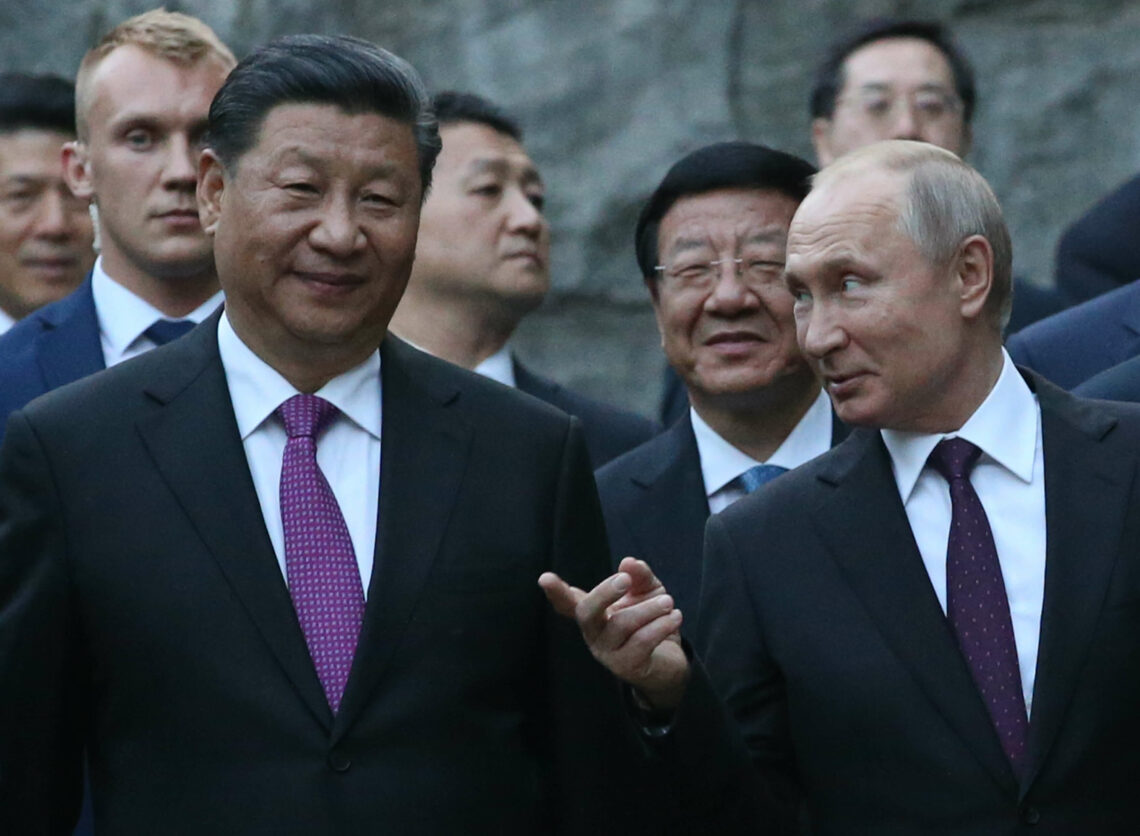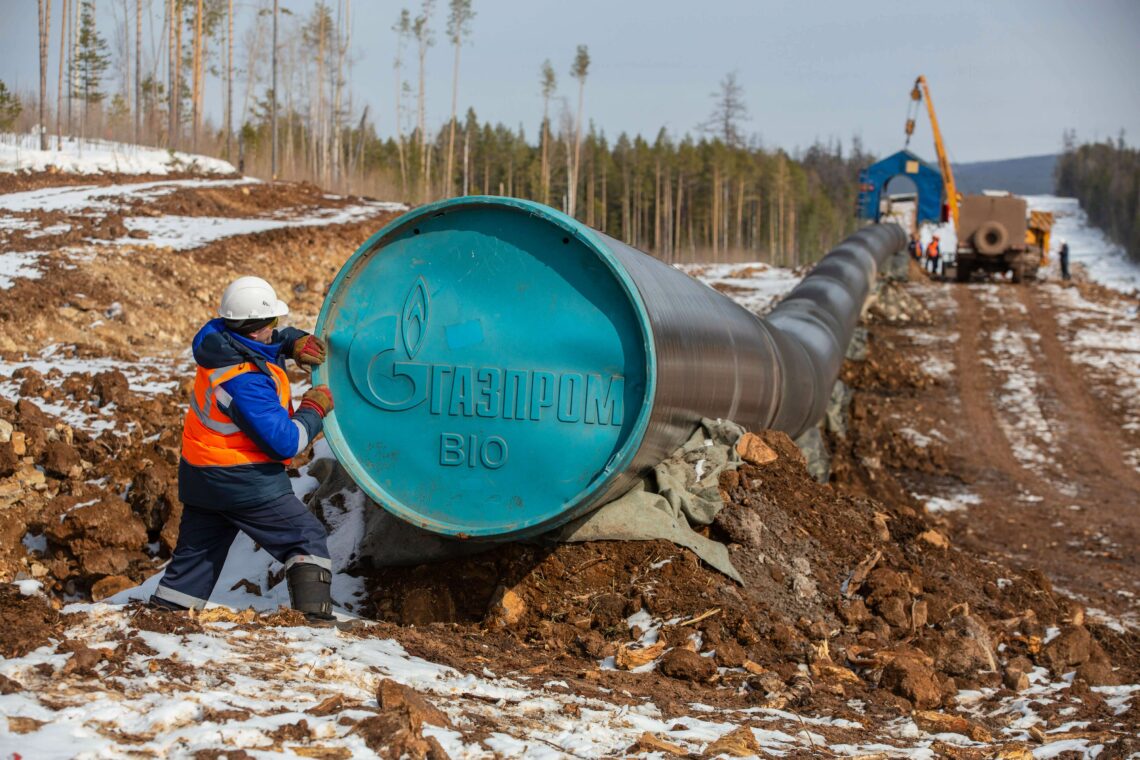The unequal Russia-China partnership
The alliance between Russia and China appears stronger than ever. However, while China has already benefited greatly from weapons and resources from Siberia, Moscow has merely increased its reliance on a partner that may prove less friendly than it seems.

In a nutshell
- Russia and China are making much of their ‘alliance’
- President Xi has gained access to arms and energy
- Moscow could lose out in this unequal partnership
In early June of this year, Russian President Vladimir Putin said that Sino-Russian relations have reached “an unprecedentedly high level,” and that the two sides have “extensive shared interests.” Recently, Mr. Putin has been frequently touting his friendship with Chinese President Xi Jinping. The Chinese leader has not been shy returning the compliments.
Over the past decade, this mutual back-scratching has evolved into a hallmark of relations between Moscow and Beijing. The two leaders routinely refer to their close personal relationship. They also emphasize their deepening economic collaboration, ranging from booming trade to a common investment bank and efforts to displace the dollar as an international reserve currency.
During a visit to Moscow in June 2019, the Chinese leader noted that “economic cooperation and trade, as a key pillar of our relations, is crucial to the common development and revitalization of China and Russia.” Later in the year, President Putin chimed in by noting that “[t]his is an allied relationship in the full sense of a multifaceted strategic partnership. This is reflected in the economy.”
There are good reasons why this exchange of compliments has become so pronounced. Behind the facade of shared economic interests, which is questionable at best, the two have a profound common interest in presenting a united front against the West. Beijing is concerned about the American “pivot to Asia,” and Russia has been estranged by sanctions in retaliation for its aggression against Ukraine.
Still, in this Sino-Russian “strategic alliance,” China is the only player that has a clear and consistent geopolitical strategy.
Strategic alliance
Behind their ritual posturing about values, the Western powers’ geopolitical strategy is incoherent and essentially self-defeating. Logically, if China is a serious contender for global dominance, if not a threat, then the West should be attempting to pry Russia loose from its alliance with Beijing. But in the present morals-driven era, Western policy has instead been focused on sanctions, whose main effect has been to drive Russia closer to China.
President Xi has little problem playing into Russian claims about a ‘strategic alliance’.
President Xi has little problem playing into Russian claims about a “strategic alliance.” He has gained vital supplies of oil and gas at bargain prices and deals on top-of-the-line military technology previously not for export, like the Su-35 fighter jet and the S-400 air defense system, among other benefits. The rising economic and military power of China owes much to this support. But what is in it for Russia, beyond geopolitical posturing? President Putin first announced his intention of making a Russian “pivot to Asia” at the APEC (Asia-Pacific Economic Cooperation) summit in Vladivostok in early 2012. This would allow the Russian economy to “catch Chinese wind” in its sails. Close to a decade later, little to nothing has come of this vision. Russian sources are notably frustrated by the enduring lack of interest from Chinese investors, who are put off by poorly developed infrastructure and endemic corruption.
An excellent example is the logging industry, which is second only to energy extraction in determining the future path of Siberian development. Timber is harvested in Russia and brought to China for processing, allowing little to no value creation on the Russian side. Blatant corruption has presumably also allowed Chinese operators to engage in forms of predatory logging that will have serious longer-term effects.
Another example is the Chinese Belt and Road Initiative (BRI). When President Xi first announced this lavishly funded vision for infrastructure development, President Putin responded by announcing that the BRI would be integrated into his own brainchild, the Eurasian Economic Union (EAEU). This proved to be excellent news for China, whose exports to Europe would now only have to pass two border posts, one entering the EAEU and the other leaving it to enter the European Union.
An important part of the gain for Russia would be a joint effort to build a high-speed rail link between Moscow and Kazan. Given the impressive track record of the Middle Kingdom in rail development, this was an attractive project. But reality has seen repeated postponements and a steady rise in the price tag, which presently stands at $22 billion. The likelihood of the railway being finished in the foreseeable future is slim. By far the most important cause for Russia to be concerned is how much China has profited from Russian arms exports. In the early stages of the Putin-Xi relationship, Russians were frustrated by the Chinese practice of reverse engineering acquired weaponry, allowing the modified products to be sold in third markets. Despite such concerns, the Kremlin decided to go ahead with sales of its top-shelf military technology.
Russia’s ‘pivot to Asia’ boils down to a pivot to China.
Today, China has become the second-largest arms producer in the world. Its technology acquisition has been so successful that Chinese arms manufacturers are getting ready to dump their Russian partners, and to start competing in third markets. The Chinese FC-31 fifth-generation stealth fighter, according to some observers, may outcompete the new Russian Su-75 “Checkmate.”
Risky partnership
Russia’s “pivot to Asia” boils down to a pivot to China. At a casual glance, it is a success. In 2006, President Putin envisioned that Sino-Russian trade would rise to $60 billion by 2010. By 2018, it had exceeded $100 billion and by 2024 it is set to reach $200 billion. The problem for the Kremlin is that, by cooperating so closely with Beijing, it has made itself vulnerable to two serious threats.
One results from China rapidly displacing Russian trade with Europe. It is significant that in 2010 already, China had bypassed Germany as Russia’s largest single trading partner. And the Ukraine crisis has accelerated the trend.
Russia’s European partners (Germans in particular) were happy to engage in intra-industry trade and cooperation in sectors like machine building and car manufacturing. Chinese partners, in contrast, are overwhelmingly focused on interindustry trade, importing Russian raw materials and exporting manufactured goods. The transformation is striking.
While machinery and equipment dominated Russian exports to China before 1993, today that share has been reduced to 2-3 percent. Mineral fuels have meanwhile risen to around 70 percent. And close to half of all Russian imports from China are made up of machinery, electronic appliances, and communications technology. China has risen to roughly match Germany in the export of cars to Russia.
This development will exacerbate the long-standing Russian pattern of reliance on primary sector development, which produces little to no value added and offers no presence in the global value chains that have transformed the Chinese economy. As the Russian economy slides deeper into dependency on China, talk about economic diversification will ring ever more hollow.
The other consequence of pivoting to China is that instead of selling energy in a diversified Asian market, Russia is locking itself into dealing with a single buyer who is known for its hard-nosed bargaining skills. The lopsided nature of the Sino-Russian energy relationship is made clear from the saga of pipeline construction.

In 2009, following 20 years of negotiations, a deal was struck for Russian Rosneft to deliver 15 million tons of oil annually over 20 years. China provided $25 billion in loans, as prepayment for future deliveries. Once the oil had started flowing, it demanded a discount on the price, which remains a commercial secret.
Five years later, following a decade of negotiations, an additional agreement was reached on natural gas. Designed to reach a full capacity of 38 bcm in 2025, the “Power of Siberia” pipeline will take gas from the Chayanda and Kovykta gas fields to consumers in eastern China. The 30-year deal was worth an estimated $400 billion.
The deal was struck in 2014, when Russia was faced with sanctions over Crimea. Although the Kremlin described the project as a great triumph, China is the main beneficiary. Early rumors that it would contribute $25 billion in financing did not materialize. The full cost – and risk – of the $55 billion project instead had to be borne by Gazprom. And the routing was exactly what Beijing wanted.
Given that Russia has massive gas reserves in Western Siberia, where infrastructure is well developed, the ideal solution would have been to pump that gas into western China. But instead of dealing with Russia, Beijing preferred to strike deals with Turkmenistan and Kazakhstan to supply its western provinces. The Power of Siberia will pump gas all the way into China’s deficient eastern regions.
Scenarios
Russia’s current stance is a combination of grandstanding and denial. While the Kremlin boasts of the clout it derives from the strategic alliance, it refuses to acknowledge the price tag. In a world moving toward zero carbon emissions, it seems unwise to pursue a policy of enhanced dependence on hydrocarbon revenues. Yet, that is precisely what the Kremlin is doing.
Europe is an important part of the problem. As it moves toward becoming carbon neutral, it will wean itself off its addiction to Russian gas. The Kremlin’s scope for playing divide and conquer will be severely eroded, and it will become even more dependent on revenues from China.Given that oil is the big earner, it is troublesome that Chinese demand for the resource is expected to peak in 2025. This makes the Kremlin even more dependent on gas exports. Russia hopes that Beijing’s commitment to the coal-to-gas transition will ensure a steady demand. Gazprom has announced a plan to construct a 6,000 km pipeline – Power of Siberia II – that would pump 50 bcm of gas annually from the massive fields on the Yamal Peninsula across Mongolia and into regions close to Beijing.
If and when this project is completed, at tremendous cost, Beijing will be able to drive a very hard bargain on price. Gazprom’s leverage is undermined by the fact that it covers less than 10 percent of China’s needs. At worst, the pipeline risks becoming a “stranded asset,” a bridge to nowhere.
But the real threat for the Kremlin is that as Russia pulls back from industrial cooperation with European partners, it will be reduced to a raw materials appendix to the voracious Chinese economy. Moscow’s pivot to China may well lead to deindustrialization and decoupling from the global economy.







